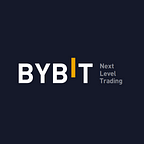Past Performance Is Not Indicative of Future Results
The coming weeks will test the mantle of crypto traders and their ability to adapt to a new trading environment. Gone are the days of predictive analysis as simplified comparison of funding rates versus spot. Crypto market sophistication has converged toward what we see today in traditional finance (TradFi) asset classes.
Leverage Isn’t as Big a Deal as It Used to Be
Prior to 2021, crypto markets were still mostly retail-driven, and institutional involvement was mostly limited to crypto-native funds — nowhere near the sheer investment volume we see today.
This meant that perpetual swaps — the uncontested avenue for leveraged trading — had a larger influence on underlying spot prices in the past. With regulatory pressure this year, overall leverage levels have also calmed down. Some exchanges have even capped max. leverage at 20x.
Increased open interest is also less reliable as a gauge of one-sided sentiment; the cash-and-carry game is now being exploited by more and more players.
What does all this mean? For starters, funding rates are likely to have lower predictive power vis-à-vis the past. Keep this in mind when an influencer shills you with a thesis based purely on funding rates!
Exceptions here, of course, are altcoins; depending on the individual digital asset, perpetual volumes may be overwhelming illiquid spot supply.
Example of analysis based on past trading dynamics:
Fund Flows Have Became More Opaque
Grayscale’s impact on the BTC spot rally last year was an undeniable reality for every netizen. At the time of this writing, Grayscale BTC fund trades at a 12% discount to spot, while other exchange-traded product fund inflows are still negligible. Hence, it’s a natural assumption that we won’t be seeing the same breathtaking rally seen back in 2020.
With the involvement of TradFi institutions offering their clients exposure to funds, derivatives and various other proxies (like Coinbase stock), would the current market be any different? These are by nature more opaque, which makes it tough to aggregate fund inflow activity.
Long story short: GBTC used to be the only game in town offering regulated exposure, aside from CME futures with punitive roll costs.
Today the market offers a plethora of choices for obtaining crypto exposure, making any uptick in demand less obvious.
Exhibit B: BTC spot prices are wagging GBTC premium/discounts, rather than the other way around.
Source: Bybt
Fundamental Dynamics Have Changed
ETH’s supply dynamic is undergoing a massive structural change since the implementation of EIP 1559, with more than $300 million burned so far. Notable as well is the uptick of EIP 1559’s legacy ratio, which was catalyzed by MetaMask’s rollout of supporting features. The flipside of this is the idiosyncratic regulatory pressure, which has moved from cryptocurrency and stablecoins to DeFi.
With fundamental drivers diverging as time goes by, traders might observe a further division between the historical correlation of ETH/BTC.
Source: parsec.finance
